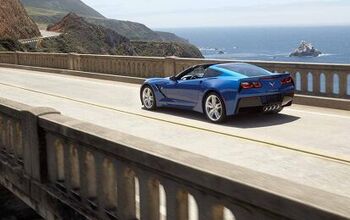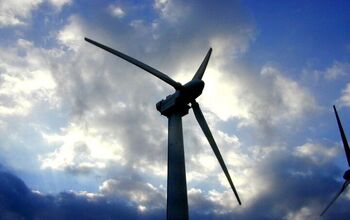Alternative Fools: E85
Brazil, poster child of the E85 movement, has farmed its way to energy independence. But the same solution won’t work so easily for the US. For one thing, Brazil produces ethanol from sugar cane, a much cheaper foodstuff than corn or anything else we can grow in the decidedly non-tropical Midwest. Perhaps global warming will lend a hand? In the meantime, every ethanol booster not wedded to corn interests cannot stop talking about switchgrass. Research indicates that an acre of panicum virgatum might yield three times as much ethanol as an acre of zea mays. But even if switchgrass proves a fruitful source of ethanol, its potential impact on US energy policy is minimal.
Americans are gas hogs. While 186 million Brazilians burn the equivalent of about 10 billion gallons of gasoline each year (40 percent of it ethanol), 296 million Americans burn 150 billion gallons of gasoline each year (3 percent of it ethanol). In other words, if America really wants to be like Brazil, we should cut gas consumption use by 90 percent. (Hint: not many Brazilians drive full-size SUVs.) Otherwise, we’ll need ten times as much ethanol as Brazil to match the Brazilian fuel mix.
Converting the entire U.S. vehicle fleet to E85 would require about twenty times as much ethanol as Brazil currently produces for domestic consumption. Guess what? America is already producing as much ethanol as Brazil, and will soon pass them to become the world’s largest ethanol producer.
To achieve full gasoline self-sufficiency, we could convert 140 million acres of farmland to switchgrass. That’s about twice the acreage currently devoted to corn and a landmass nearly the size of Texas. Once we use American coal to produce the electricity needed to convert the result to ethanol, we’re there! Or not. Devoting so much American soil to ethanol would send farmland and food prices soaring. This will make American farmers very happy, and anyone who has to buy food unhappy. We might have to starve millions to do it, but we’ll be able to feed our SUVs without foreign oil!
Alternatively, we could import ethanol. If Corn Belt congressmen would agree to cut the protective tariff, Brazil would gladly increase sugarcane production to help meet our needs. Brazil has plenty of space for more cane fields. What good does so much rain forest do anyone, anyway? No matter which route is chosen, this huge ethanol production expansion won’t– can’t– happen overnight. As part of his energy less dependence policy, President Bush has decreed that American ethanol production must double by 2012. If US gasoline consumption stops growing, by that date all US gas could contain five percent ethanol. Maintain this torrid growth rate, and by 2018, all American gas could contain ten percent ethanol.
Guess what? Virtually all vehicles on the road today can already burn ten percent ethanol, commonly known as “gasohol.” In other words, existing cars can probably use all of the ethanol we can produce through at least 2018. So why do we need new, E85-capable vehicles and new E85 pipelines and pumps in 2006? Well, they do seem to make Corn Belt congressmen and their constituents happy. They help GM deflect criticism. And, perhaps best of all, an E85 Tahoe gets a CAFE rating of 33.3 miles per gallon. You see, this rating is calculated based on the very shaky assumption that E85 (only 15 percent of which is gasoline) will be used half the time. As a result, GM can sell more V8-powered vehicles without incurring fines. Without this loophole, it would have to actually sell more fuel efficient vehicles if it didn’t want to pay up.
Of course, GM didn’t create this incentive. It’s just intelligently reacting to it. Congress, pressured by Corn Belt people and industries, created the incentive. But why does E85 make the Corn Belt so happy? Why not simply mandate more gasohol, which can be sold everywhere and used by everyone today? I have no idea. For some reason, no one seems to be talking about this possibility. Clearly, we should.
Michael Karesh operates www.truedelta.com, a vehicle reliability and price comparison website.
Michael Karesh lives in West Bloomfield, Michigan, with his wife and three children. In 2003 he received a Ph.D. from the University of Chicago. While in Chicago he worked at the National Opinion Research Center, a leader in the field of survey research. For his doctoral thesis, he spent a year-and-a-half inside an automaker studying how and how well it understood consumers when developing new products. While pursuing the degree he taught consumer behavior and product development at Oakland University. Since 1999, he has contributed auto reviews to Epinions, where he is currently one of two people in charge of the autos section. Since earning the degree he has continued to care for his children (school, gymnastics, tae-kwan-do...) and write reviews for Epinions and, more recently, The Truth About Cars while developing TrueDelta, a vehicle reliability and price comparison site.
More by Michael Karesh
Latest Car Reviews
Read moreLatest Product Reviews
Read moreRecent Comments
- Buickman I like it!
- JMII Hyundai Santa Cruz, which doesn't do "truck" things as well as the Maverick does.How so? I see this repeated often with no reference to exactly what it does better.As a Santa Cruz owner the only things the Mav does better is price on lower trims and fuel economy with the hybrid. The Mav's bed is a bit bigger but only when the SC has the roll-top bed cover, without this they are the same size. The Mav has an off road package and a towing package the SC lacks but these are just some parts differences. And even with the tow package the Hyundai is rated to tow 1,000lbs more then the Ford. The SC now has XRT trim that beefs up the looks if your into the off-roader vibe. As both vehicles are soft-roaders neither are rock crawling just because of some extra bits Ford tacked on.I'm still loving my SC (at 9k in mileage). I don't see any advantages to the Ford when you are looking at the medium to top end trims of both vehicles. If you want to save money and gas then the Ford becomes the right choice. You will get a cheaper interior but many are fine with this, especially if don't like the all touch controls on the SC. However this has been changed in the '25 models in which buttons and knobs have returned.
- Analoggrotto I'd feel proper silly staring at an LCD pretending to be real gauges.
- Gray gm should hang their wimpy logo on a strip mall next to Saul Goodman's office.
- 1995 SC No


































Comments
Join the conversation
Excuse me, nweaver, but WHAT are you talking about? I believe you have confused two very different processes. Electrolytic production of hydrogen requires a lot of electricity. That is due to the fact that you are taking one of the lowest energy products known to man (water) and converting it to a fuel. It should be obvious that any process based on water as a major feedstock is unlikely make sense in terms of thermodynamics, but I digress. When you convert various carbon sources to liquid fuels, you are basically converting one fuel (carbon) to a more convenient one (liquid). You need very little external energy for that. If you needed to, you could run it completely without electricity from a grid. The energy that ends up in the product comes from the feedstock, not the electricity. Nuclear, great, until you consider what to do with the radio-active waste. Also, I don't think nuclear is a great source of liquid fuel for transportation - there are better sources around.
Like the Biomass to Liquids process. As an alternative to biomass, not sure if gas-to-liquids process using natural gas would be as efficient? Recently read an article in The Economist regarding electric cars. Tesla motors claims 1 cent per mile on its electrical car. Pricing for a Tesla is steep but it be a matter of time before the technology would flow through for mass production. Check out www.teslamotors.com. Nuclear power has currently become economically and enironmentally feasible. Commodities are expensive and fossil fuels polute the environment; Co2, mercury, sulphur etc... Not sure what exactly happens with the nuclear waste but does anyone have any thought on solar power and why it hasn't been implemented to reduce our current/future dependence on Nuclear power. With regards to Primary Fuels believe Biomass and Solar Power are our best alternative. Also GM and Ford etc... Have been screwing the American consumer for years with shitty fuel efficient vehicles. Its time they go under for their inefficiencies and Toyota and Honda take over.